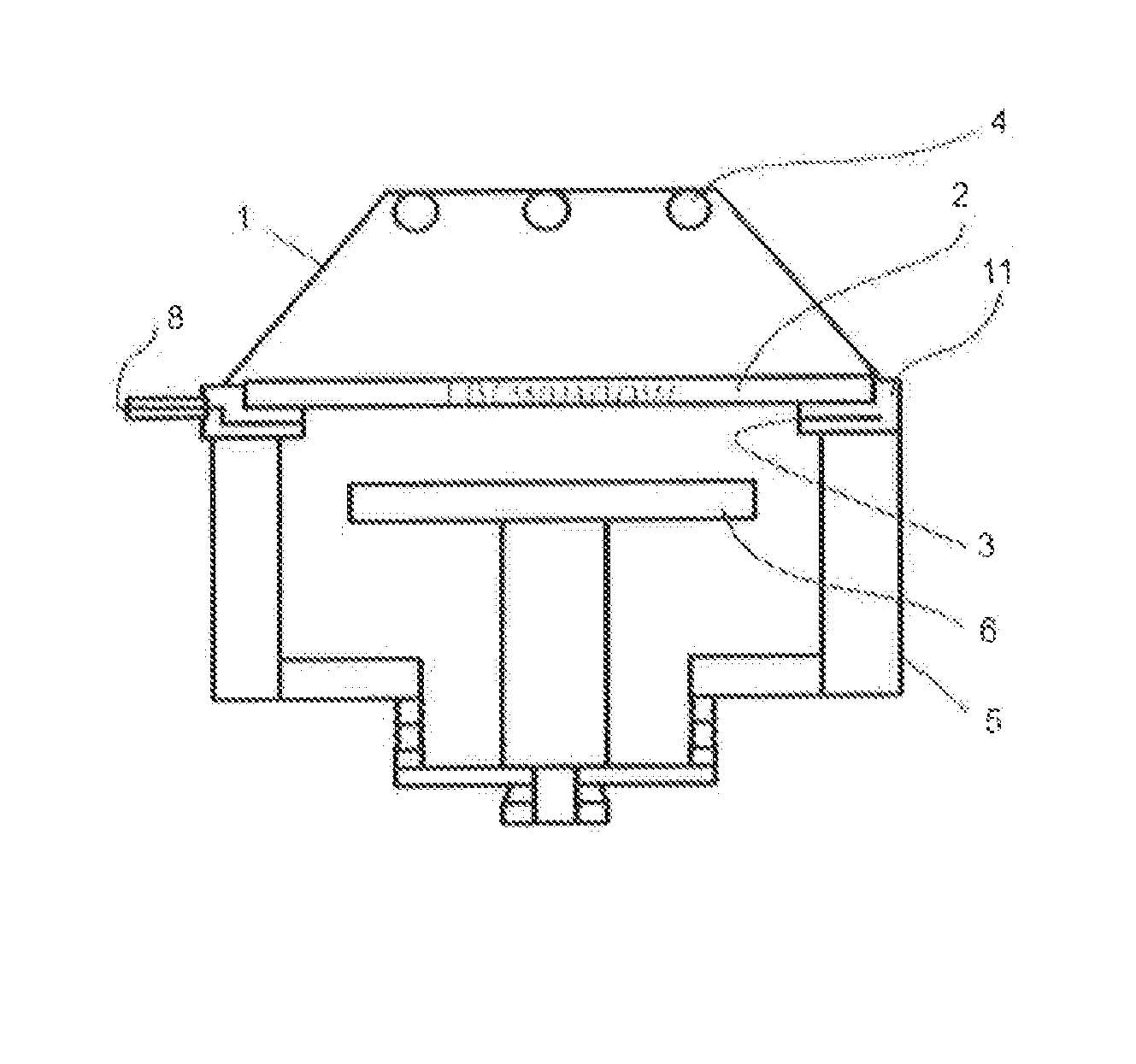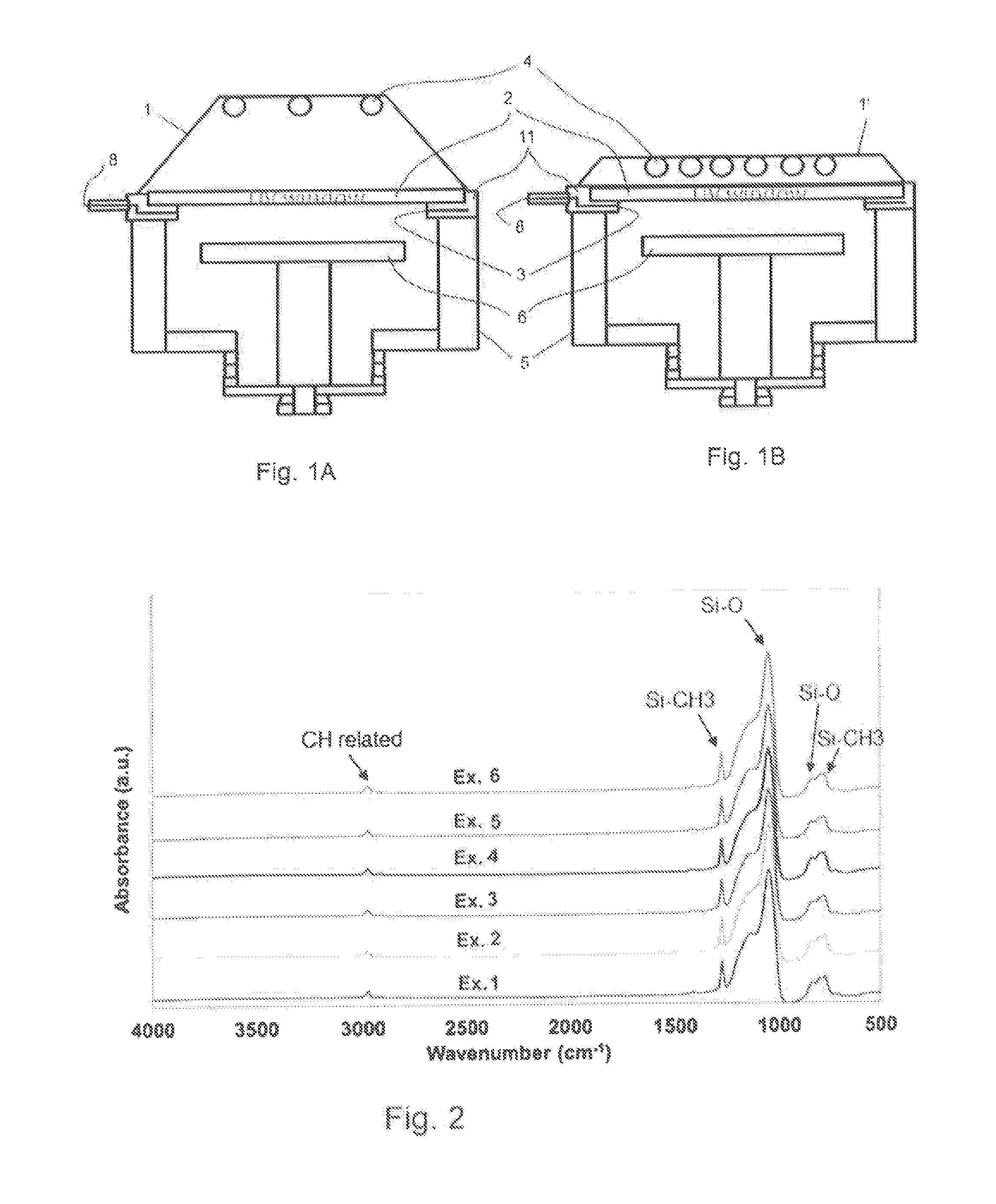UV-Curing Apparatus Provided With Wavelength-Tuned Excimer Lamp and Method of Processing Semiconductor Substrate Using Same
a technology of excimer lamp and uv light, which is applied in the direction of measurement devices, instruments, scientific instruments, etc., can solve the problems of large drop in film density, difficult to obtain the required wavelength at the required illuminance, and the electrical characteristics of the device to be slightly deteriorated, so as to prevent unnecessary rise in semiconductor substrate/apparatus temperature, the effect of reducing cost and instant energy production
- Summary
- Abstract
- Description
- Claims
- Application Information
AI Technical Summary
Benefits of technology
Problems solved by technology
Method used
Image
Examples
examples 1 to 6
[0045]A substrate (300 mm in diameter) having a dielectric film containing a porogen material formed thereon was loaded in a UV irradiation apparatus illustrated in FIG. 1B wherein dielectric barrier discharge excimer lamps illustrated in FIG. 3 were installed. The tubes of the lamps contained Xe gas, and the fluorescent substances applied on an inner surface of the tubes are shown in Table 2 below. Table 2 also shows alternatively usable fluorescent substances. No water-cooling system was used. The dielectric film formed on the substrate was cured in the apparatus using UV light emitted from the lamps under the following conditions:
[0046]Pressure: 5 Torr
[0047]Supplied gas: Nitrogen gas
[0048]Temperature: 400° C.
[0049]Distance between the substrate and the lamps: 100 mm
[0050]Power applied to the lamps: 4 W / cm2
[0051]Irradiation duration: 60 to 1,200 seconds
TABLE 2EmissionFluorescentpeak spectrumsubstanceAlternativeEx. 1190 nmLaPO4: NdYPO4: Nd, LuPO4: NdEx. 2230 nmLaPO4: PrCaSO4: PrEx...
PUM
 Login to View More
Login to View More Abstract
Description
Claims
Application Information
 Login to View More
Login to View More - R&D
- Intellectual Property
- Life Sciences
- Materials
- Tech Scout
- Unparalleled Data Quality
- Higher Quality Content
- 60% Fewer Hallucinations
Browse by: Latest US Patents, China's latest patents, Technical Efficacy Thesaurus, Application Domain, Technology Topic, Popular Technical Reports.
© 2025 PatSnap. All rights reserved.Legal|Privacy policy|Modern Slavery Act Transparency Statement|Sitemap|About US| Contact US: help@patsnap.com



